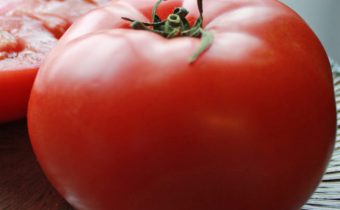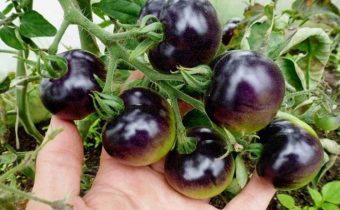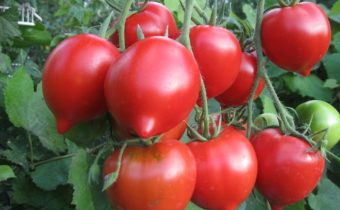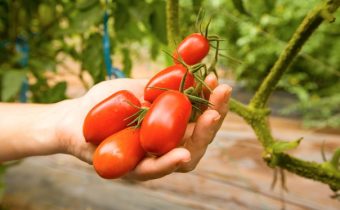Tomato "Negro": original colors and harmonious taste
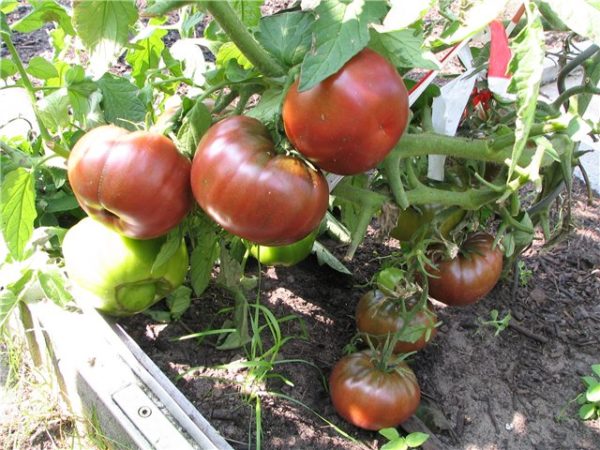
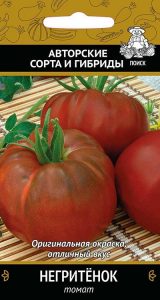 One of the black varieties that some gardeners have already tested is the Negriton tomato. Some reviews about this interesting tomato and his photo will be interesting for those summer residents who plant original plants on their plots.
One of the black varieties that some gardeners have already tested is the Negriton tomato. Some reviews about this interesting tomato and his photo will be interesting for those summer residents who plant original plants on their plots.
Tomatoes of this variety were obtained by Russian breeders about 10 years ago and belong to a series of author's varieties.
The plant is more average, indeterminant type, intended for cultivation in open ground and film greenhouses throughout Russia. Get acquainted with the properties of the tomato "Negritenok", its characteristics and description of the variety, which, according to reviews, correspond to it.
Tomato Description
These large plants with a powerful stem grow to 150 cm in open ground and reach 2 m in greenhouses. Like most tall plants, requires the formation and garters to supports or trellis. The leaves of the plant are corrugated, medium size. For the plant is characterized by the formation of inflorescences after 10 - 14 leaves.
Original fruits with coloring have the following features:
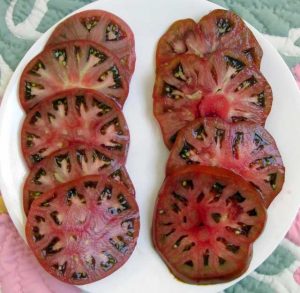
- The color changes during ripening from green to dark red and brown-black.
- Tomatoes have a flat-rounded shape; in large fruits, ribbing is noted at the base.
- The weight of the fruits of the first brushes reaches 300g. Fruits from subsequent brushes have an average weight of 120-160g.
- Tomatoes have excellent taste.
- Consume fruits mainly fresh and for making juices and ketchups.
- Well kept at home.
- Fruits contain a large number of health-promoting substances that enhance immunity.
- They are recommended as curative, for various diseases, as they contain a large amount of antioxidants.
See also: Self-harvesting tomato seeds
Pests and diseases
The variety has a relative resistance to tomato diseases such as cladosporiosis, altariosa leaf spot, tobacco mosaic virus.
However, when grown in greenhouses, requires increased attention to the disinfection of seeds, equipment and land, as a comfortable environment in greenhouses is not only for vegetables, but also for various harmful bacteria.
For the prevention of viral and fungal diseases in greenhouses, the annual treatment of the greenhouses themselves and the land in them with disinfectant solutions is mandatory,
To avoid such dangerous for tomato diseases as late blight, summit rot and others, treat plants as a preventive measure with copper-containing drugs or Fitosporin.
Control the appearance of plants, since healthy, powerful plants are much less susceptible to infections.
The most dangerous pests of tomatoes are the Colorado beetles, whiteflies, slugs, as well as the underground ones - the larvae of the May beetle and wireworms. The most difficult to deal with underground pests, as their presence and harm can be found out too late - when the plant is already dying.
The only real measure to combat these pests is spring digging of the soil before planting.With the mass distribution of the wireworm apply tool Basudin.
To combat land pests, you can use a variety of insecticidal drugs, but in small areas they rarely use these tools, especially in summer cottages.
Here they use either repellent infusions - wormwood, garlic, birch tar, or collect pests manually. It is especially important to collect and destroy the Colorado potato beetle before the appearance of the second generation, since the struggle with the larvae is more tedious.
See also: Low-Yield Tomatoes
The advantages and disadvantages of the variety
Summer residents who grew up a Negritenok tomato give positive reviews about the taste of the variety, the photos of the fruits reflect their unusual appearance, but there is no consensus about the yield of plants. Apparently for this variety, not always amateurs can pick up the necessary growing conditions.
However, the main advantages of the variety are:
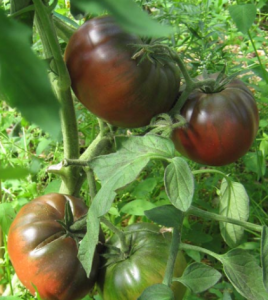
- Harmonious, great taste of the fruit.
- Original colors.
- Versatility of use - in addition to the use of fresh, it is frozen, dried, make juices.
- Tomatoes are a storehouse of useful substances, including anthocyanins, thanks to which the work of vessels improves, immunity increases.
- Resistance to many diseases of tomatoes allows you to harvest until late terms, subject to agricultural practices.
The disadvantages of the variety "Negritenok" include unstable harvest, the need to devote a lot of time to caring for the plant - formation, garter, pasynkovaniyu.
Features agrotehnika
Growing strong hardened seedlings is often a necessary condition for obtaining a full-fledged harvest. Therefore, it is important for a vegetable grower to control all the stages of its preparation.
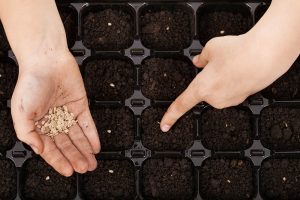
- Presowing treatment involves disinfecting tomato seeds in a solution of potassium permanganate or Fitosporin for 20 minutes. After washing in running water, the seeds are soaked in growth stimulants for 5-6 hours.
- It is advisable to disinfect the land for growing seedlings - to freeze or steam. It should consist of a mixture of garden soil with compost, ash and mineral fertilizers. If the ground is not light enough and loose, peat or coconut substrate is added to it.
- Seeds are sown in wet ground after 2-3 cm, covered with a layer of earth (5-7mm) and placed in a comfortable warm place (24-25 degrees).
- Immediately after the appearance of the eyelets, the plants are exposed to light - on window sills or under lamps of artificial lighting. During the first two weeks, the temperature regime is fairly rigid: during the day it is 15-16 degrees, at night 12-14 degrees.
- During this period, it is necessary to provide plants with illumination for 11-12 hours per day. Watering should be very moderate, in order to avoid black leg disease.
- After the quenching period, the temperature is increased by 5-7 degrees, while leaving the maximum illumination mode.
- With the appearance of 3-4 true leaves, the tomatoes are planted in cups or larger boxes, keeping a distance of 15-20cm between them. Seedlings are fed as needed, depending on its appearance, 1-2 times over the entire period with mineral fertilizers for seedlings.
Planting seedlings in open ground or in greenhouses start at the onset of stable warm weather.
See also: Why do tomato leaves turn yellow in the greenhouse and how to deal with it?
Further care of plants includes:
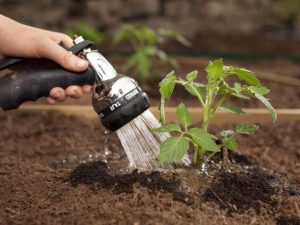
- Watering every 7-10 days depending on the weather.
- Weeding, loosening.
- Feed dressings for the first 2-3 weeks - infusion of mullein (or other nitrogenous fertilizers), after the formation of ovaries, potash - phosphate fertilizers, ash are introduced.
- Garter plants to the trellis, pasynkovanie, pruning yellowed leaves in the lower part of the plant. For larger fruits in the first racemes, the plants are formed into one stem.
Greenhouses, when growing tomatoes in them, must be aired, and watering should be carried out directly under the root of the plants in the morning. Dry air in the greenhouse will help avoid infections and preserve the harvest of these exotic fruits.
Video: Checked tomato variety "Negritenok"


